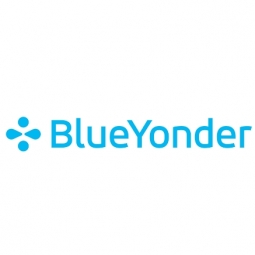下载PDF
ITC Limited Creates the Perfect Recipe for Supply Chain Success
技术
- 平台即服务 (PaaS) - 数据管理平台
适用行业
- 食品与饮料
适用功能
- 物流运输
- 采购
用例
- 供应链可见性(SCV)
- 需求计划与预测
服务
- 系统集成
挑战
ITC Limited 是一家总部位于印度、市值数十亿美元的企业集团,在管理其快速增长的包装食品业务(尤其是饼干)的供应链方面面临挑战。饼干部门正经历着高需求波动和材料成本波动。ITC 现有的基于电子表格的工具没有考虑到其不断变化的成本结构,这使得该公司很难看到他们所做出的供应链决策的宏观影响。在其 17 家工厂网络中生产 120 多种不同的饼干 SKU 需要频繁进行制造转换,而农业部门的剧烈价格波动会影响其材料成本,这增加了成本优化的复杂性。此外,ITC 基于电子表格的规划使他们无法制定有效的中长期战略计划。
关于客户
ITC Limited 是一家总部位于印度、市值数十亿美元的企业集团,业务涉及快速消费品、酒店、纸张和包装、农业和信息技术等多个领域。该公司的包装食品业务正在快速增长,饼干(曲奇)是其最大的单一类别。饼干细分市场的需求波动性和材料成本波动性很大。该公司运营着一个由 17 多家工厂和 50 家仓库组成的供应网络。ITC 致力于保持其在饼干类别中的领导地位,并利用未来的增长机会。
解决方案
为了保持其在饼干领域的领先地位并利用未来的增长机会,ITC 求助于 Blue Yonder,以确保该公司的供应网络(包括 17 多家工厂和 50 个仓库)以尽可能低的成本向市场提供产品。该公司实施了 Blue Yonder 的网络设计功能,这使他们能够采用总成本优化方法进行战略和战术供应链规划。该解决方案提供了有关任何新投资如何影响其整体成本结构的透明视角。这使 ITC 能够根据总成本方法构建五年产能路线图,同时考虑位置、产能、能力和时间表限制。Blue Yonder 支持的快速响应模型使公司能够不断改善其成本状况,无论出现什么趋势。
运营影响
数量效益
相关案例.

Case Study
The Kellogg Company
Kellogg keeps a close eye on its trade spend, analyzing large volumes of data and running complex simulations to predict which promotional activities will be the most effective. Kellogg needed to decrease the trade spend but its traditional relational database on premises could not keep up with the pace of demand.

Case Study
HEINEKEN Uses the Cloud to Reach 10.5 Million Consumers
For 2012 campaign, the Bond promotion, it planned to launch the campaign at the same time everywhere on the planet. That created unprecedented challenges for HEINEKEN—nowhere more so than in its technology operation. The primary digital content for the campaign was a 100-megabyte movie that had to play flawlessly for millions of viewers worldwide. After all, Bond never fails. No one was going to tolerate a technology failure that might bruise his brand.Previously, HEINEKEN had supported digital media at its outsourced datacenter. But that datacenter lacked the computing resources HEINEKEN needed, and building them—especially to support peak traffic that would total millions of simultaneous hits—would have been both time-consuming and expensive. Nor would it have provided the geographic reach that HEINEKEN needed to minimize latency worldwide.

Case Study
Energy Management System at Sugar Industry
The company wanted to use the information from the system to claim under the renewable energy certificate scheme. The benefit to the company under the renewable energy certificates is Rs 75 million a year. To enable the above, an end-to-end solution for load monitoring, consumption monitoring, online data monitoring, automatic meter data acquisition which can be exported to SAP and other applications is required.

Case Study
Coca Cola Swaziland Conco Case Study
Coco Cola Swaziland, South Africa would like to find a solution that would enable the following results: - Reduce energy consumption by 20% in one year. - Formulate a series of strategic initiatives that would enlist the commitment of corporate management and create employee awareness while helping meet departmental targets and investing in tools that assist with energy management. - Formulate a series of tactical initiatives that would optimize energy usage on the shop floor. These would include charging forklifts and running cold rooms only during off-peak periods, running the dust extractors only during working hours and basing lights and air-conditioning on someone’s presence. - Increase visibility into the factory and other processes. - Enable limited, non-intrusive control functions for certain processes.

Case Study
Temperature Monitoring for Restaurant Food Storage
When it came to implementing a solution, Mr. Nesbitt had an idea of what functionality that he wanted. Although not mandated by Health Canada, Mr. Nesbitt wanted to ensure quality control issues met the highest possible standards as part of his commitment to top-of-class food services. This wish list included an easy-to use temperature-monitoring system that could provide a visible display of the temperatures of all of his refrigerators and freezers, including historical information so that he could review the performance of his equipment. It also had to provide alert notification (but email alerts and SMS text message alerts) to alert key staff in the event that a cooling system was exceeding pre-set warning limits.

Case Study
Coca-Cola Refreshments, U.S.
Coca-Cola Refreshments owns and manages Coca-Cola branded refrigerators in retail establishments. Legacy systems were used to locate equipment information by logging onto multiple servers which took up to 8 hours to update information on 30-40 units. The company had no overall visibility into equipment status or maintenance history.





